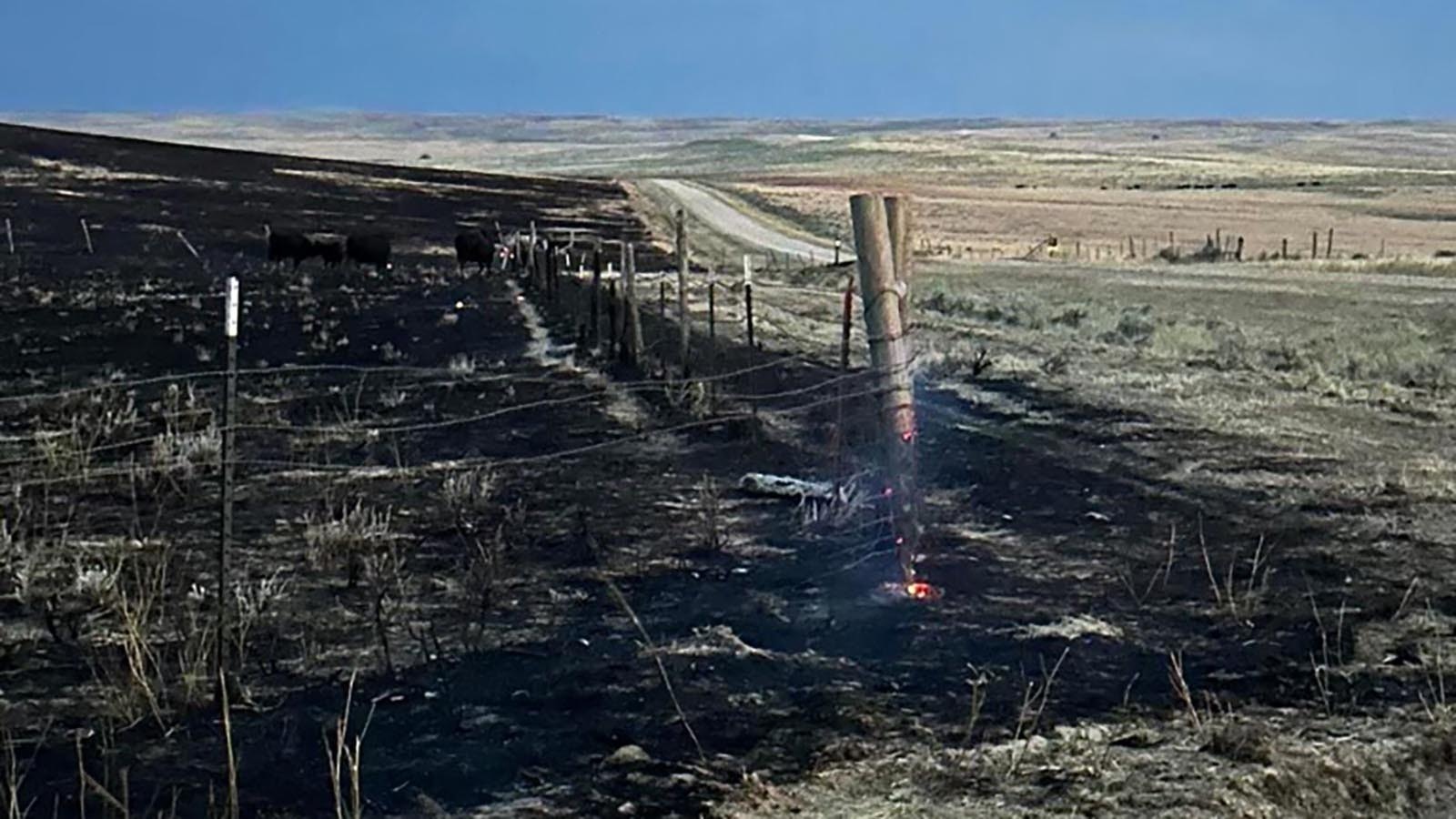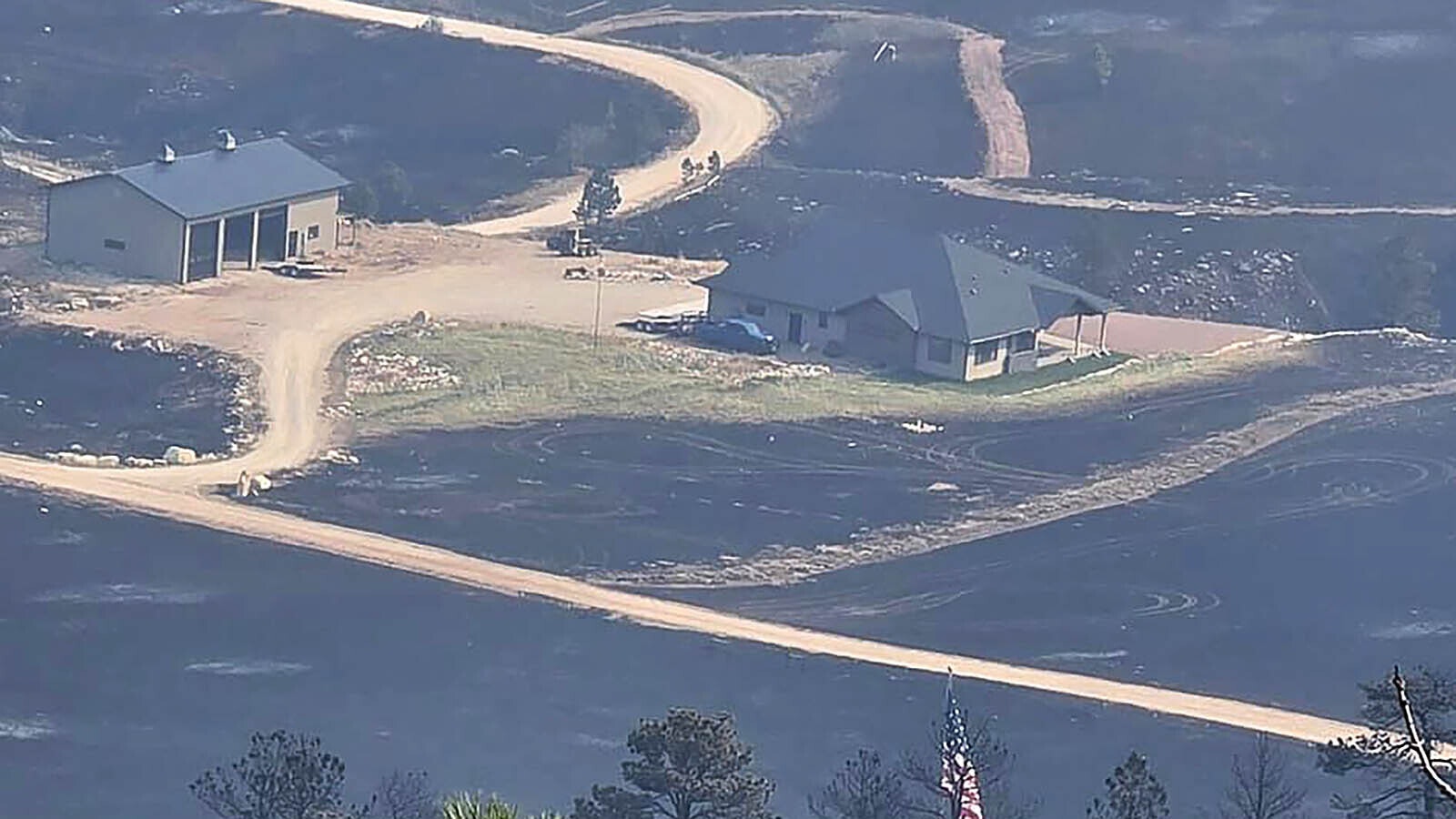Ranchers throughout Wyoming and Nebraska are rallying to provide emergency hay for those impacted by wildfires tearing through Wyoming’s critical cattle grazing lands.
Wyoming’s biggest wildfire of the season so far is the Red Canyon Fire, which has burned its way through 125,000 acres in the Bighorn Basin as of Tuesday. Other blazes in Willow Creek and Dollar Lake continue to impact the availability of forage for cattle throughout the state.
Coordinating a portion of the relief effort is the University of Wyoming Extension, which has launched a website designed to connect ranchers with hay surpluses for those who need help providing for their herds.
The site, which describes its users as “neighbors helping neighbors,” allows those with extra hay to list their contact information. Others in need of feed for their livestock can then contact the donors directly via email to seek assistance and coordinate pickup or delivery of hay.
Landowners and ranchers in need can also post requests for hay via the site. These requests include urgency levels ranging from “within one week” to “immediate.”
As of Wednesday, the site lists the contact information of four generous people offering anywhere from two to 300 bales of hay to those in need.

'Wyoming Is Hurting'
Byron Hust of Imperial, Nebraska, is offering 20 large round bales of hay through the emergency site to ranchers in need.
He said his decision to offer some of his surplus is out of concern for the devastation caused by wildfires raging across the state.
“I’ve seen that they were having these large fires up there in south central Wyoming and I thought ‘well, those people need help,’” he told Cowboy State Daily.
Hust, a retired member of his local fire department, said he has witnessed firsthand the devastation caused by major blazes. He said he would rather donate his surplus hay than sell it during such a trying time.
“I’ve been on the fire department down here many years ago and I’ve seen what people need whenever they have a fire and I know those cows get hungry,” Hust said. “They don’t like to just stand there and chew on ash.”
Hust estimated it takes grass about 30 to 45 days to regrow in the wake of a fire. Cows, he added, usually cannot go longer than 10 days without eating.
“Wyoming is hurting, and I’ve seen what the fires do up there in the timber so if the ranchers have cattle up in the mountains and the fire burns up, they can’t even move back into their main ranch and have feed there for the whole bunch,” he said.
“It probably means they’re going to have to cut the herd back,” Hust added. “Right now we can’t seem to be losing any herds of cattle because there’s livestock shortage when it comes to cattle.
Andy Edwards of Black Tooth Ranch in Sheridan is offering two round loads of hay through the site and said he can relate to other ranchers in need.
“Last year we had a bad fire, and fires are a tremendous gut punch so you’re too busy trying to line up so many things,” he said. “You don’t really have time to go out and find feed when you need it.”
“We were in the same boat last year and lucky a lot of people came forward,” he added.
Before websites like the one by UW Extension, Edwards said ranchers would coordinate on an individual basis to arrange for hay deliveries. He also recalled prior “hay hotlines” which would coordinate emergency relief via phone.
“Wyoming is kind of a big community so we try to help each other out when we can,” Edwards added.
Hay Is For Horses
Barton Stam, a Hot Springs County-based UW Extension educator, said in a university statement that the effort seeks to fast-track relief efforts to maintain cattle herds throughout the state.
“We are trying to organize hay donations so that they can get to those in need who lost grass to the fire in a streamlined manner,” he wrote.
Steve Paisley, interim associate director of UW Extension, said the program will make a significant impact in fire-ravaged communities across Wyoming.
“Our county offices want to be a resource for the county and community,” Paisley said. “Hopefully, we can provide information and resources as well as help coordinate hay donations and dispersal.”
Other groups, including the Wyoming Stock Growers Association, are also collaborating on similar relief efforts, Paisley added.
“There are a lot of players helping (with fire relief),” Paisley said. “It’s not just Extension, though we are hoping to help coordinate.”
It’s unclear how many ranchers the program could potentially assist. UW Extension officials did not respond to followup questions.

Wildfire Devastation
While anyone with urgent need for hay can post a request to the site, UW Extension specifically mentions wildfires as a critical factor contributing to hay shortages around the state.
“Wildfire is part of life in Wyoming,” the site reads. “During fire season, quick problem-solving and neighbors helping neighbors can make all the difference.”
An included link to a university web page notes that wildfires consume an average of 14.5 million acres of land across the country each year.
The USDA wrote in an August report that Wyoming may see an increase in demand for quality hay in the wake of the range fires. It also acknowledged water conservation efforts may further impact hay supply throughout the state in the coming months.
“Several areas of the state are dry, and some range fires are prevailing,” it wrote. “As cattlemen assess the destruction from the fires, hay producers are hoping to sell more hay to those burn-out areas.”
Hay producers, it added, may expect “a slight increase” in the price per ton of hay as a result.
Jackson Walker can be reached at walker@cowboystatedaily.com.





